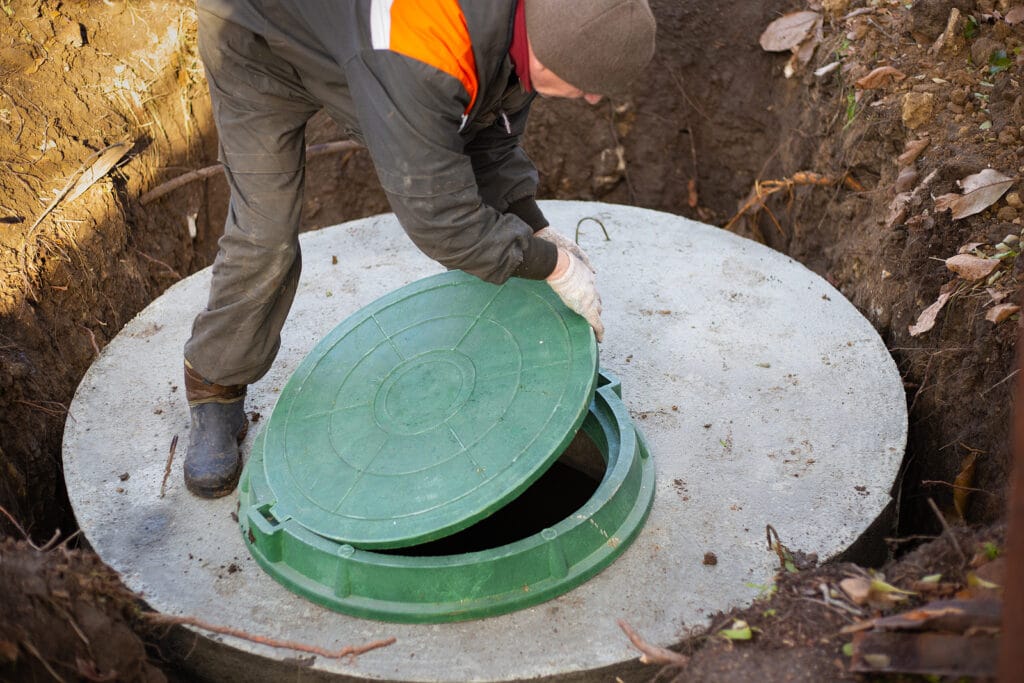Certain aspects of homeownership are not often discussed until they are a cause for concern. One important but often neglected component of a house is the septic system. It’s easy to think that it can do the job with ease and without maintenance. Septic tanks, as with all systems, have a finite time span of operation and have to be replaced over time.

Cost of replacing a your septic tank could be an enormous financial burden for homeowners who are unprepared. It is important to know that many factors go into the cost of replacing a Septic tank.
To determine the real cost of a septic tank replacement, you should consider more than just the cost. It’s not just an issue of taking out the old tank and installing an entirely new one. The price will be influenced by multiple services and components. From obtaining permits to employing professionals to installation and excavation, each step incurs costs that homeowners should be aware of to be able to budget their expenses effectively.
Cost of septic tanks, leach fields and their installation are all crucial elements to be considered. The price of new tank may vary greatly based on the size and material of the tank, as well as the complexity of installation. The price is also affected by the site of the property, local laws, as well as the soil conditions. You should consult with experts from septic systems who will analyze your needs and provide an accurate estimate. The experts will analyze aspects like the size and shape of your leach fields to provide an accurate estimate of the overall costs for your septic system.
Leach field, also known as drain field is an additional expense. This component is essential for wastewater treatment and distribution. It is essential to be cautious when replacing a damaged or defective leachfield, or one that has failed. This can affect the price for a septic system replacement. Factors like the size of the field soil composition and accessibility all influence the cost of replacement, making it essential to consider these elements when formulating the cost total.
homeowners should consider the cost that will be incurred by replacing the tank for septic. This can disrupt your everyday life by requiring that you leave your house, or limit your use of water while the installation is being done. Be aware of the inconveniences that could arise during your project since they can impact your daily routine, and could bring additional costs such as accommodations or adjustments to your schedule.
It is equally important to recognize the need for proper maintenance and care of septic systems is necessary to extend their lifespan and decrease the chance of replacement that is premature. Inattention to routine maintenance can cause more severe problems down the line like tank failure or damage to the drainfield. Incorporating septic system maintenance costs into your budget is a wise investment that could save you money over the long term.
By now, you may have realized that determining the septic system cost is not a straightforward task. It requires an in-depth analysis of many variables that range from the size and design of tank to the difficulty of installation, or the condition and condition of the leachfield. Furthermore, the area of your home and local rules can affect the overall cost. It is important to consult experts who have experience changing the septic system.
You could be surprised after you upgrade your septic tank to discover that there are additional costs that you didn’t anticipate. These expenses can be incurred quickly, which is why it’s vital to keep track of them before making a final decision.
The following are the hidden costs involved in replacing the septic system
The costs of inspections and permits. Before you begin work on the replacement of your septic tank, you’ll need to get permits from your local authority. These permits are costly and it is possible that you will have to pay for inspections.
The cost for excavation and removal. The old septic system will need to be removed and excavated prior to the installation of a new system. is installed. This could be a costly procedure, particularly if the old system is in an unaccessible area.
The expense of backfilling and graders. After the old system has been taken away, it will be needed to grade and then backfill the hole. This is important to ensure that the new system is correctly draining.
The cost of landscaping is a significant expense. Once the new system is installed, you might need for landscaping work to make your area appear tidy and neat. It is possible to add by the time you engage a landscaping professional.
It’s crucial to take into account these hidden costs when budgeting for your septic system replacement. You’ll avoid unpleasant surprises in the near future by planning ahead.
The eco-friendly solutions are an ideal choice for budget-conscious homeowners. The eco-friendly solutions for septic are not only cost-effective alternatives to conventional systems, but also save the environment through reducing water runoff and pollution. Additionally, eco-friendly septic options are becoming more accessible and affordable, making them a great choice for those looking to reduce their impact on the environment without breaking the bank. While there might be upfront costs to transitioning to an eco-friendly system, these costs are far more than covered for in long-term savings. Being green isn’t just an environmental trend, it’s a vital life-style change that everyone should contemplate if they’re truly passionate about preserving our planet for generations to come. When you install the correct system, you can ensure that your home will run efficiently, effectively, and at a low cost for maintenance.
